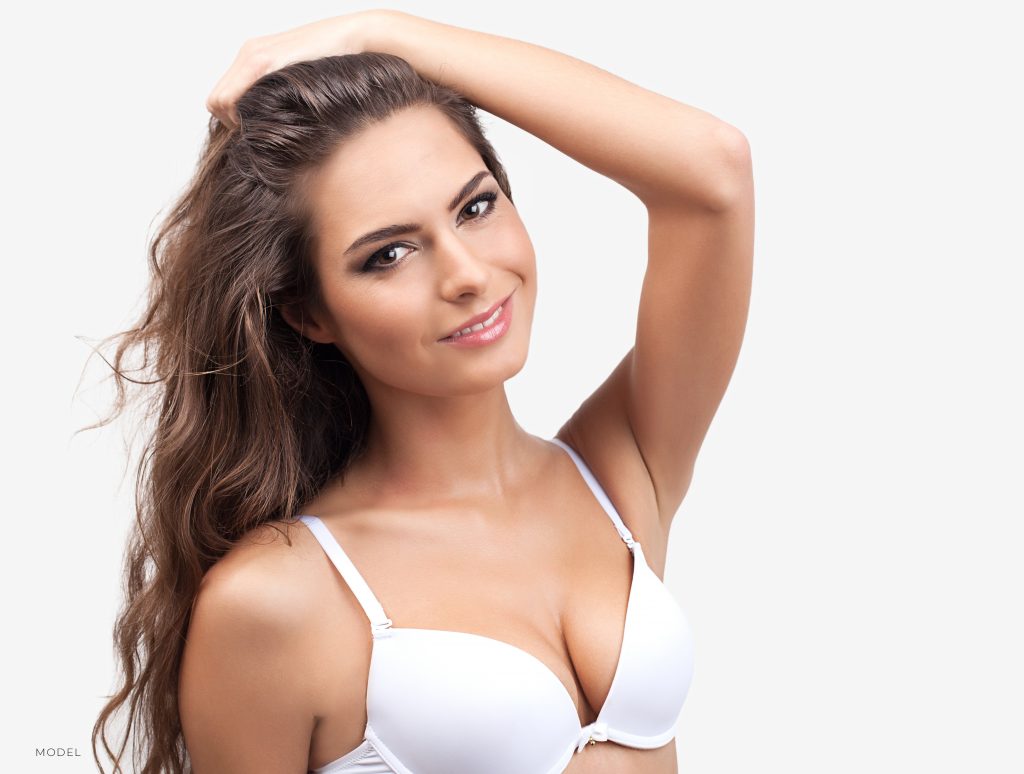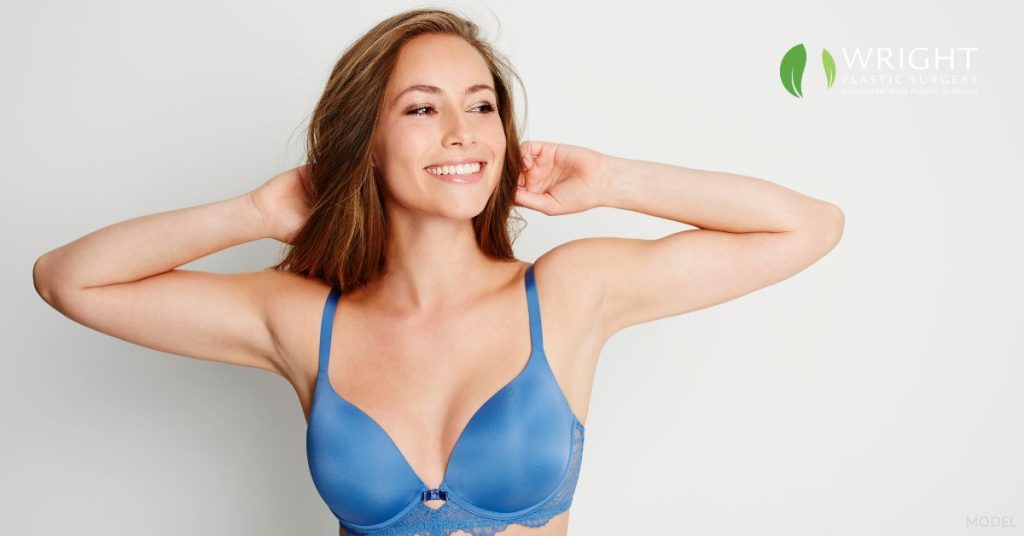Breast augmentation remains one of the most popular cosmetic surgery procedures throughout the U.S. However, many women today prefer a more modest increase in breast size than they did 10 to 15 years ago. Fat transfer breast augmentation—also called fat grafting—is an innovative technique that uses your own fat for subtle, natural-looking breast enhancement.
Before deciding whether breast fat transfer is right for you, it’s important to understand how fat grafting works, the pros and cons of fat transfer breast augmentation, and how it differs from breast augmentation with implants.
How Does Fat Transfer Work?
Fat grafting isn’t limited to breast augmentation. In fact, using fat for cosmetic breast enhancement is a relatively recent development compared to other fat transfer procedures. Fat grafting as part of the treatment of breast cancer reconstruction has been performed for many years, confirming the safety of this surgery. Plastic surgeons also commonly use fat as a natural facial filler to rejuvenate facial contours and as a filler to reshape the buttocks during a Brazilian butt lift.
The 3-Step Fat Transfer Process
Fat transfer to the breasts depends on the skill of a board-certified plastic surgeon who performs these 3 steps:
- Harvesting: The surgeon removes excess fat from virtually any area of the body using liposuction. The abdomen and flanks (“love handles”) are frequent harvesting sites because they typically have ample fat supply, and slimming those areas accentuates breast enhancement results.
- Purification: A closed-system device separates, processes, and purifies the harvested fat cells. The purification process is sterile to ensure the fat’s viability.
- Injection: Using a type of syringe called a cannula, your surgeon injects the fat through small incisions made in natural creases to avoid visibility and create a symmetrical, natural breast shape.
It’s essential to note that only a portion of the transferred fat will be viable. Studies show that up to 70% of the fat survives the transfer process, but that percentage is lower in some cases. Multiple grafting sessions may be necessary to achieve your desired results.
Who Is a Good Candidate for Fat Transfer Breast Augmentation?

Ideal candidates for breast fat transfer typically possess these traits:
- Want an increase of only about 1 cup size
- Have enough excess fat to produce the desired results
- Understand that the results may be slightly smaller or larger than they expect
Many women opt to combine their natural breast augmentation with a breast lift (mastopexy) or use this approach during breast implant removal, also called explant surgery. Breasts often sag after implants are removed, and fat grafting combined with a breast lift restores an attractive shape and volume to the breasts.
Fat is also an effective tool for camouflaging breast implants for patients with thin breast skin or little existing breast tissue. This fat supplementation creates results that look and feel more natural. It offers the same benefits for revision breast implant patients who have experienced a complication or who want to replace older implants.
Women who prefer a more substantial increase in breast size are better candidates for breast augmentation with implants. You can learn more about breast fat transfer vs breast implants in this related blog post.
Pros and Cons of Breast Fat Transfer
While fat transfer offers many benefits, it also has potential side effects to be aware of before committing to this procedure. Here’s an overview of the pros and cons:
Breast fat transfer pros:
- Produces natural-looking results
- Contours other areas of the body while enhancing breast size
- Minimizes scarring
- Reduces the risk of allergic reaction by eliminating the use of synthetic implants
Breast fat transfer cons:
- Achieves only a limited increase in breast size
- Creates less predictable results since not all of the transferred fat cells survive
- Sometimes requires multiple sessions to achieve desired results
- Has a small risk of side effects such as infection at the injection sites or temporary or permanent breast lumps
What To Expect After Fat Transfer Breast Augmentation
While recovery for every patient varies, some bruising at your liposuction and fat injection sites is normal. Immediately after your procedure, expect your breasts to appear fuller than expected because of swelling. It takes about 2 to 3 weeks for swelling to resolve—which patients sometimes misinterpret as a sign that fat is disappearing.
Because not all the fat survives the transfer process, the outcome isn’t immediately apparent. Typically, fat that is viable 3 months after the surgery is permanent. If a patient schedules a single fat grafting procedure, surgeons may overfill the breasts, knowing that some fat won’t remain. Transferring smaller amounts in a series of sessions is another option.
Your Natural Breast Augmentation Results
Often, women considering fat grafting wonder how their breast fat transfer results will look after 5 years or longer. Unlike breast implants, fat will remain in the breasts for the rest of your life. However, your breasts will continue to age naturally, and factors like weight fluctuation, hormonal changes, and gravity may affect their overall appearance.
Since fat transfer can cause microcalcifications and small lumps in the breast, it is important to let your mammogram provider know that you’ve had fat transfer breast augmentation. These irregularities usually aren’t a sign that you have cancer, but they can appear on your mammogram.
Schedule a Consultation
If you’re considering breast augmentation in the Little Rock area and want to learn more about fat transfer, request a consultation using the online form or call us at (501) 575-0088 to schedule an appointment.
This post originally appeared in September 2021 and was updated in July 2024.






Hello, I am interested in fat grafting breast augmentation. I don’t have a lot of fat on my body but my problem areas (around my waist) would probably have enough to achieve results I’m looking for. Are you able to provide roundabout pricing for a procedure like this?
Yes, please contact our office at 501-575-0088 to get more information.
Am interested in the fat transfer breast augmentation